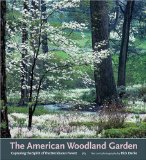| Cooperate with your landscape and encourage a natural community. |
| ABOUT US START IDEAS DO LESS USEFUL PLANTS PROJECTS VIEWS RESOURCES TOPICS |
|
|
|||
Your lawn grass, left unwatered for two days, shrivels and turns brown... OR development has swallowed fields near your property, decimating hedgerows and windbreaks that hosted a host of refugee animals... OR your property was once part of a vast prairie, now nearly gone. A great way to reduce yard work and water use, create a more interesting landscape, and increase wildlife habitat all at the same time is to restore some of your property to a self-sustaining natural ecosystem. Here's how: Step One: Pick a Place. Choose a section of your lawn to convert.
Step Two: Choose a Landscape. Find a native ecosystem that fits your target area's climate and geography. If you know a natural area with the right characteristics, mimic it. For the lowest maintenance in the long run, restore your land to its dominant or climax ecosystem. (Read about the major North American ecosystems.)Within the larger landscape, the dominant ecosystem varies according to local topography and climate, so consider your site's attributes and your needs as well as your area's climax ecosystem when planning your wild area.
Step Three: Off the Undesirables. Unless you're in a newly developed area that was recently wild, you'll probably need to kill your lawn rather than let it grow. Most lawn grass and weeds are not native and will outcompete and eventually overrun your natural community. To kill your lawn, simply make an edge where the shrunk lawn will end, then smother the lawn that you're returning to nature with a mulch appropriate to your chosen ecosystem.You may be tempted to use herbicides to kill off vegetation before establishing your wilderness. However, if your landscape was recently native, herbicides may kill crucial soil microbes that would help native plants re-establish, as well as native plant seeds retained in the soil. In this situation, you may first want to try creating the right conditions for those seeds to sprout, as they'll do much of the work of restoring a natural landscape. To encourage native vegetation to return in a recently native site, instead of smothering your lawn, try these steps first:
Step Four: Add Desirables. Add appropriate native plants. You can find these at local native plant nurseries. If you have trouble finding a nursery, contact the nearest agricultural extension service or ask other native plant gardeners. Step Five: Patrol for Invaders. While you wait for Nature to reclaim her territory, help her by monitoring the area for invasive non-natives and removing them. Watch for friendly natives that might reappear; don't just pull up any unfamiliar plant. However, if you're using land that has been cultivated for many years, chances are good that the seeds sprouting will be invasive non-natives.On the other hand, if you create the right conditions—removing sod, raking the exposed soil, and watering—seeds long buried may sprout again, and wind and animals will bring more seeds that fit the evolving community. Once established, a wild area will tend to require much less maintenance than your lawn. Your main effort will be spent researching an appropriate landscape and building it. The first few years will require more weeding than later, since your wild plants may need time to cover the ground well enough to resist weeds. A project like this will not only make your property more self-sustaining, more interesting, and more habitable for wildlife; it will also lead you to better understand and appreciate your local natural history. Bonus tip: Keep Off the (Neighbor's) Grass. Establish a boundary between your wild area and any "developed" land that it borders, particularly neighbors' lawns. Use a fence with edging below it to prevent plants in the two areas from mingling. The ground-level barrier is key to keeping your new plants from mixing with your neighbors' plants.You may want to discuss your plan with adjacent property owners before you start your landscaping project, not only to head off any concerns that might lead to strained relations, but also because they might be interested in shrinking their lawns too. Coordinating your efforts may eliminate the need for a barrier and allow you to share both knowledge and costs. |
Want to design a prairie? Sally Wasowski's Gardening with Prairie Plants will teach you about the different families of native prairie plants and how to combine them to get a healthy and authentic mix. Creating or restoring a woodland? Rick Darke writes eloquently about the structure and patterns of woodlands, and his gorgeous color photos illustrate his points well.  Read my review of several great woodland design books. To learn more about soil life, read Teaming with Microbes. You'll see incredible photos of microscopic soil organisms and read about their roles in plant health. buy at AmazonWhatever your chosen ecosystem, you'll get support and information from your state's Native Plant Society. Or find a Wild Ones - Natural Landscapers chapter near you. "Go Wild" is part of a series on how to SHRINK your lawn. See others: |
||
|
Thanks for visiting http://www.LessLawn.com! All site contents © 2001-2013 Evelyn J. Hadden, except where noted. All rights reserved. |